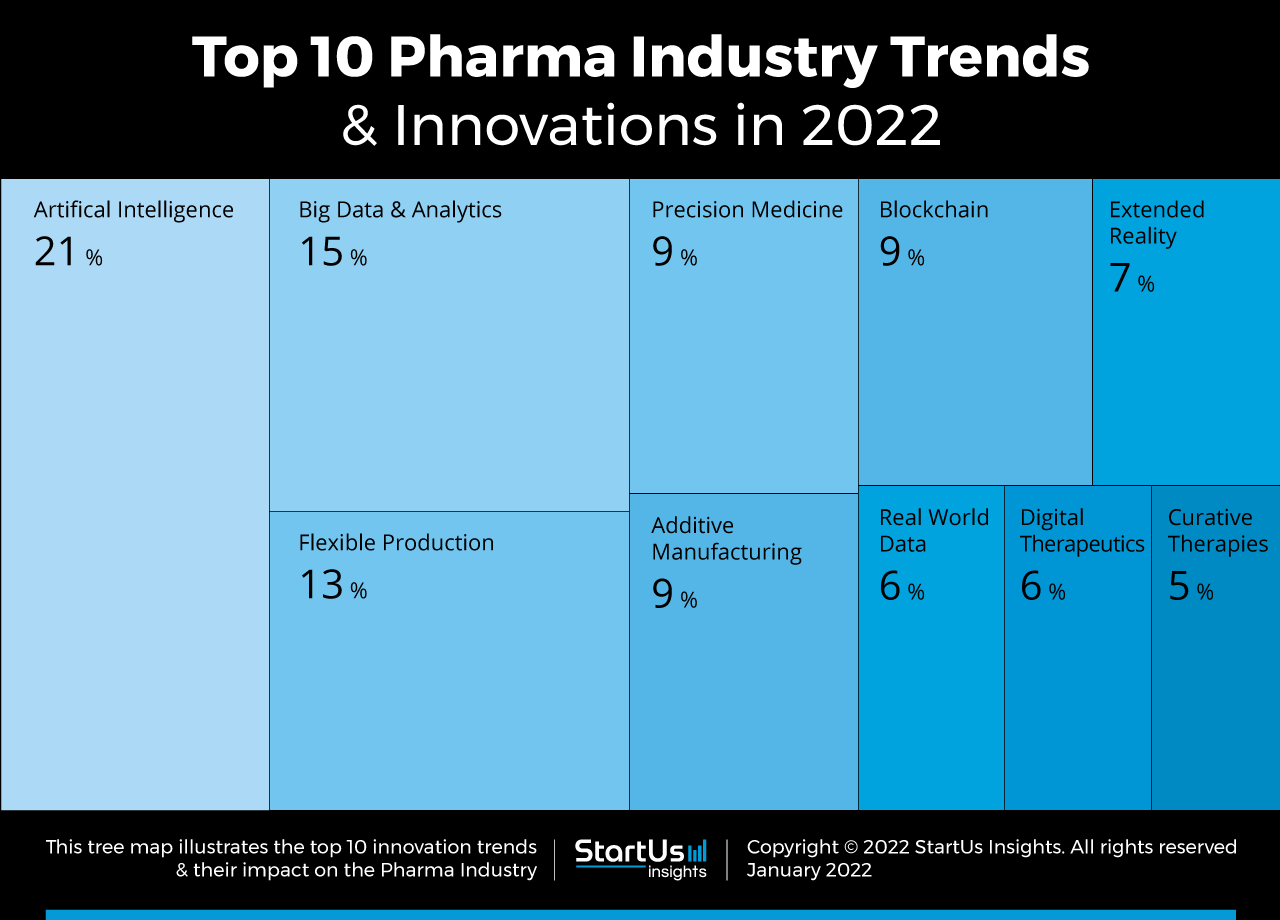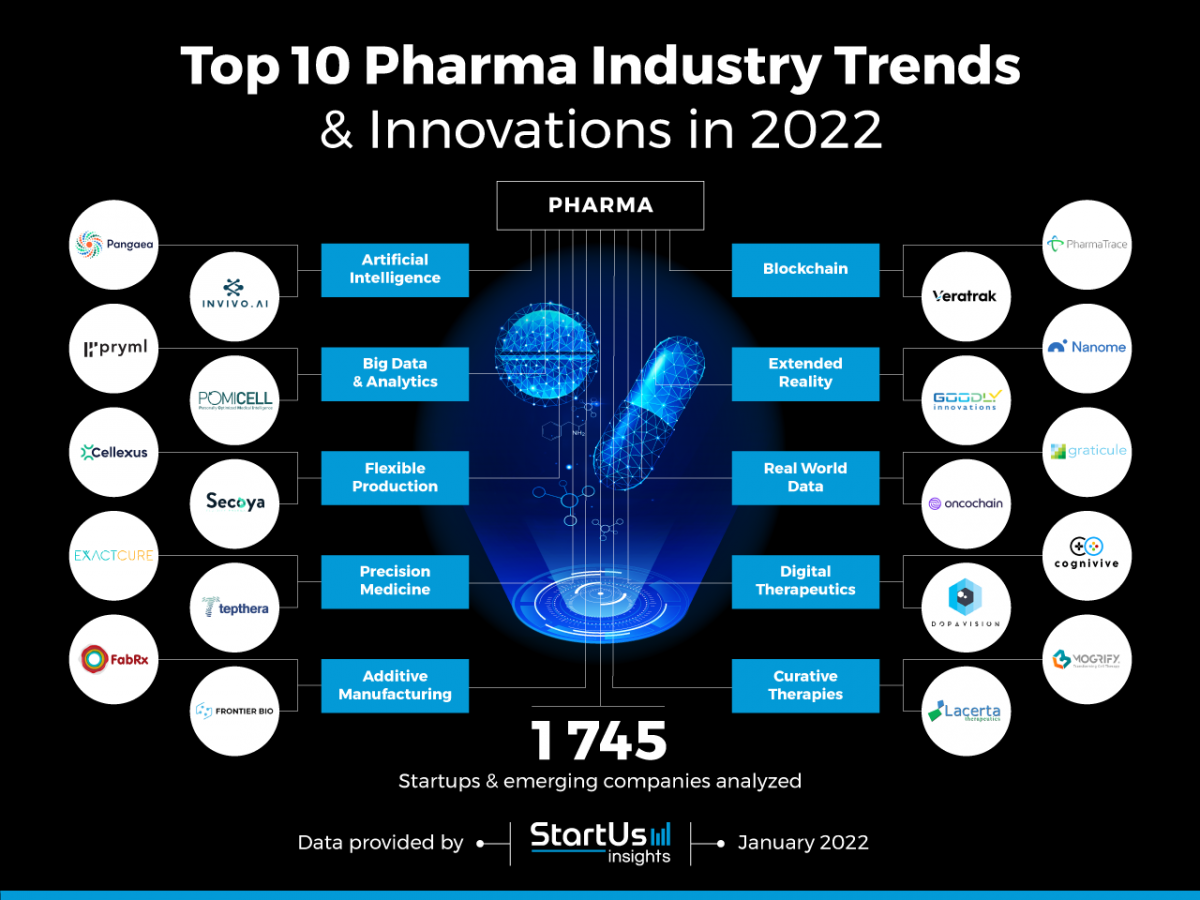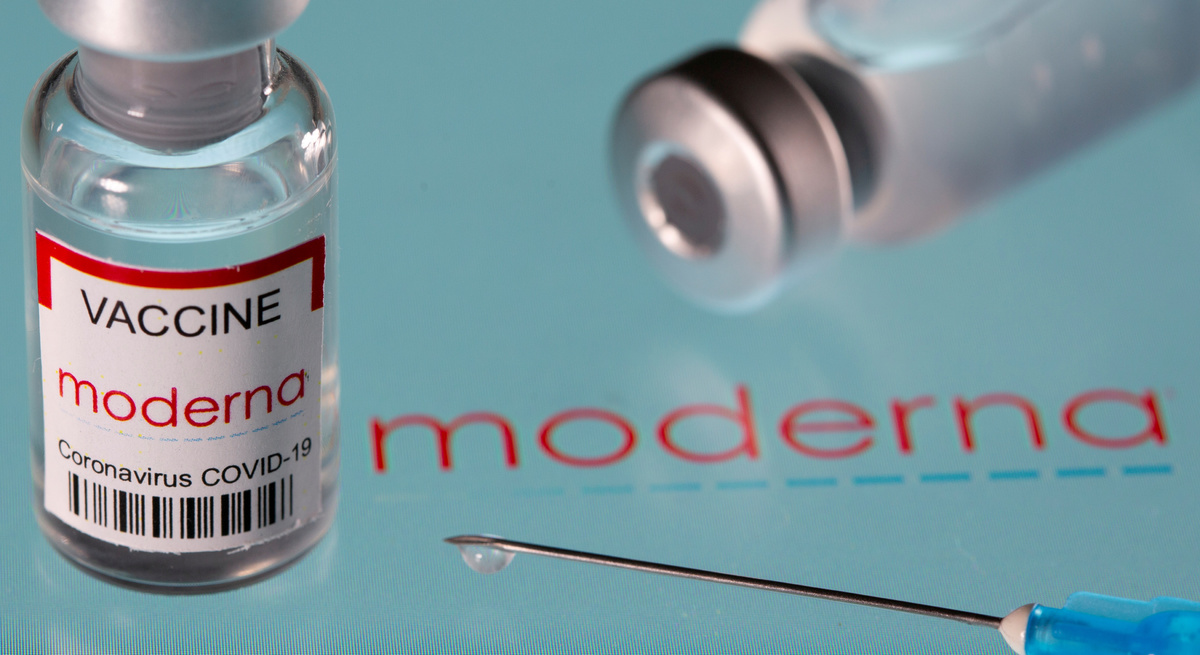Are you curious about which pharma industry trends may impact your business soon? Let’s take a look at the top 10 latest trends in the pharmaceutical sector with SEN Pharma.

1. Artificial Intelligent (AI)
In the past, the Achilles heel of the pharmaceutical industry had been the slow rate of medication discovery and development. However, the emergence of AI tools helped the drug discovery process and development process accelerate. Furthermore, based on Roots Analysis proprietary analysis criterion, AI-enabled technologies help organizations cut down the costs of launching new drugs by up to 15%. Because of these advantages, many pharma giants have collaborated with firms specializing in AI-driven technologies. For instance, GSK partnered with Vir Biotechnology in April 2020 to enhance COVID-19 drug discovery through CRISPR and AI.
2. Big Data and Analytics
The pharmaceutical sector requires high-performance systems to analyze the massive amounts of data generated during drug discovery and development. Hence, data management and security are a great concern among pharmaceutical businesses as they need third parties to share data with collaborators. Thanks to big data and analytics solutions, historical and real-time data are becoming valuable assets for pharmaceutical companies.
3. Flexible production
Healthcare needs are changing drastically over the last decade. The conventional pharmaceutical production methods no longer meet the requirement of the market. As a result, the companies found a new technique called flexible manufacturing systems, which provide means, such as single-use bioreactors, to respond quickly to emerging changes and demand. According to a report by Allied Market Research, the global market for flexible manufacturing systems for the pharmaceutical industry generated $2.0 billion in 2021 and is projected to generate $3.3 billion by 2031, exhibiting a CAGR of 5.3% from 2022 to 2031.
4. Precision medicine
Precision medicine is an innovative treatment method based on the concept of treating each patient as an individual. The ultimate goal is to adapt treatment to the most appropriate group of patients. In 2021, the global precision medicine market size was valued at 65.22 billion USD and was projected to reach 175.6 billion USD by 2030, mounting at a CAGR of 11.5% during the forecast period of 2021 – 2030.
5. Additive manufacturing
By using computer-aided design (CAD) or 3D object scanners, additive manufacturing allows for the creation of objects with precise geometric shapes. 3D printing of human tissue has great applications in drug development, organ engineering, and regenerative medicine. This makes it possible to create precision pills as well as medical formulations that depend on physiology or age. The development of bioinks, tissue engineering, and microfluidics is also aided by bioprinters.
6. Blockchain
Blockchain is best known for its role in cryptocurrencies like Bitcoin. Also, the technology’s inherent transparency, security, and dependability have many uses in the pharmaceutical industry. Blockchains can be used to trace the origins of products, the transport of drugs, and the procurement of raw materials. Additionally, this technology can minimize the number of intermediaries involved in the pharmaceutical process, leading to cost reduction and safety improvement. The pharmaceutical sector is eager to explore this technology. In 2020, the pharmaceutical company Merck collaborated with Singapore-based Zuellig to track vaccines for Human Papilloma Virus, Gardasil, using eZTracker. In 2021, UNICEF submitted a bid to create a blockchain-based system to identify counterfeit COVID-19 vaccines.
7. Extended reality technology (XR)
Extended reality comprises Augmented Reality (AR) and Virtual Reality (VR). In the pharmaceutical industry, EX technologies are overcoming traditional 2D difficulties in the complex process of drug development. It enables increased efficiency, productivity, and safety in the manufacturing process with relevant and contextual data access, process optimization, guided assistance, and decision support.
8. Real-World Data
Real-world data (RWD) and real-world evidence (RWE) are valuable across the entire pharmaceutical product lifecycle. RWD provides crucial information that reflects a larger group of patients and aids in guiding decisions regarding healthcare. These insights allow researchers better design and conduct clinical trials, thus, reducing financial risks associated with R&D programs.
9. Digital Therapeutic
Digital therapeutics (DTx) deliver evidence-based medical intervention directly to patients via software to prevent, manage, and treat diseases and disorders. The growing demand for DTx has piqued the interest of investors and pharmaceutical companies. For the past seven years, investments in digital therapeutics companies in the US have increased by 40% annually. In 2021, Teiji Pharma partnered with Jolly Good to develop VR DTx for major depressive disorder. In August 2022, Bayer invested 64 million USD in One Drop to develop DTx for patients with diabetes, high blood pressure, and high cholesterol.
10. Curative Therapies
The shift to curative treatments promises to change the entire healthcare ecosystem. Curative therapies such as cell and gene therapy allow us to eliminate long-term treatment for chronic diseases or difficult-to-treat conditions. Gene therapy involves inserting genetic material into cells to compensate for damaged genes or produce a healthy protein. The most prevalent vectors used in gene therapy are viruses that have undergone genetic engineering.
REFERENCES:




